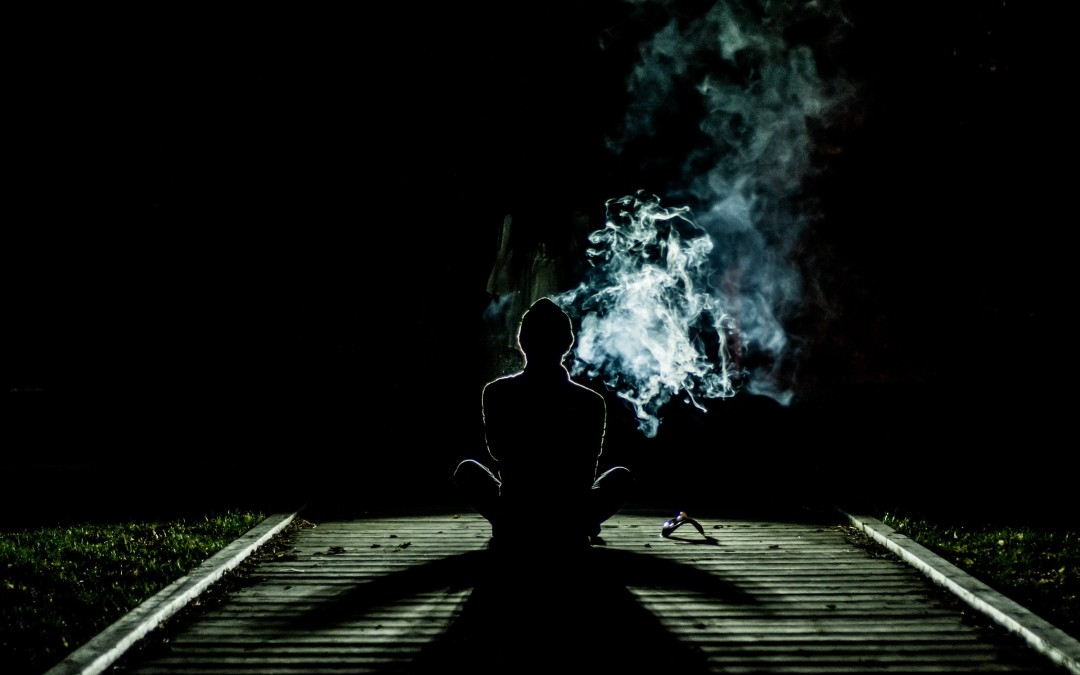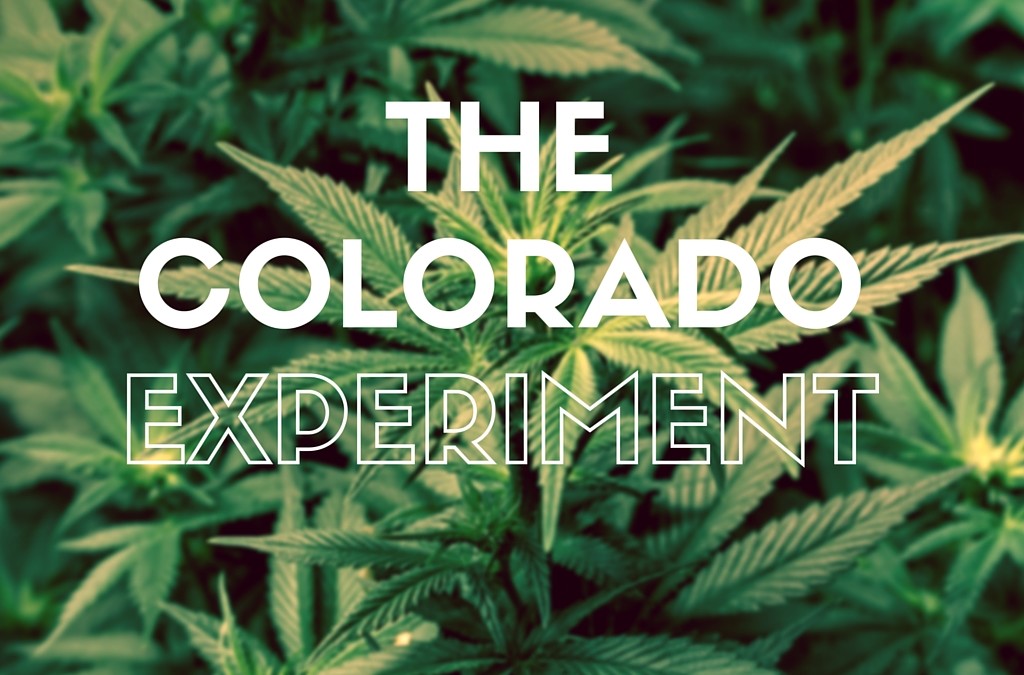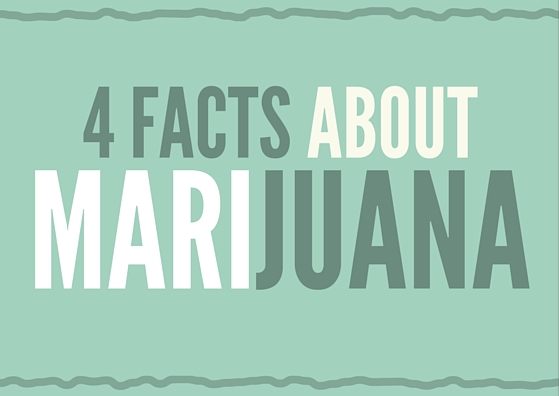Marijuana News

Cannabis Use With Mothers and Career Women – Marijuana Video
These Colorado women want to make smoking weed as socially acceptable as drinking a glass of wine. It’s interesting to see how they view marijuana not interfering with their parenting.

Marijuana Meditation
“Weed and yoga go together like peas and carrots,” says Kendal Norris, founder of Mason Jar Event Group. The group is a culinary, cannabis-friendly group that recently organized yet another luxe cannabis event: Yoga With a View.
And at this event, everything revolves around the cannabis – from the yoga to the menu, to the view. Kendal Norris pairs her culinary skills with her passion for cannabis, and her love of beauty and the world around us. This time, the beauty took place in a barn, filled with people in plank and downward dog poses.
The Vibes and “Feel”
What was this experience like? One attendee says, “We were breathing together. We were stoned together. We were together…Everybody was smiling, feeling good and vibing off each other.”
And it wasn’t just women in the room. It was actually a man who said this!
Yoga and Dabs
You may also be wondering what it was like to do yoga after smoking. Well imagine the combination of a post-workout high and an actual high, and that just about sums it up. An attendee said, “The after-workout high is a real thing. It also applies to yoga, of course, and it’s extra-special when combined with marijuana.”
Culinary Cannabis
But as you can imagine, after a work out and after a smoke, the whole room was starving. Luckily, this was planned for, and soon enough, everyone was passing food down the tables. Organic Greek yogurt parfait. Southwest scramble with fresh chorizo and green chiles. Vegetable frittata with spinach, asparagus and kale. Smoked cheddar grits, and even house-made bacon.
Socializing
If marijuana, yoga and meditation, a great view, a positive energy and great food isn’t enough…then maybe the social aspect of the event will entice you. One attendee said, “Those 30 or 40 minutes of socializing had me wishing that my regularly scheduled weekly yoga practice in Capitol Hill was followed by chit-chat, catching up and mimosas.”
You can read more about the event and the experience, here.

Can Cannabis Improve Your Sleep?
It’s not uncommon knowledge that many Americans suffer from a lack of sleep; which impedes on our day-to-day lives in tremendous ways. Lack of sleep can lead to weight gain, stress, loss of productivity, a reduction in physical and social activities and even depression.
This is why 9 million Americans are using prescription sleeping pills. But for many of those patients, the drugs don’t work as well or as intended. Most sleeping pills actually degrade the quality of sleep that the patient gets; sleeping medications, such as benzodiazepines, convert deep sleep into a lighter sleep in order to increase the length of sleep. But the worst problem with sleeping pills is that they are highly addictive.
For all of these reasons and more, psychologists are finding that many of their patients like to instead use cannabis to help them relax and fall into deep sleep. According to Psychology Today, many health clinicians are aware that many psychiatric patients use cannabis. And, even more patients who suffer from insomnia use it. This is one of the reasons that many states are following the new trend of legalizing medical marijuana.
Despite legalization and social acceptance of cannabis use being a new trend, the actual use of marijuana is not something new. For thousands of years, humans have used cannabis for its psychoactive and medicinal qualities. The extent of the plant’s capabilities are unknown, as unbiased and extensive research into the plant’s effects on humans is relatively new.
Because research in this field is relatively new, we don’t have a great deal of research on the subject, and therefore evidence on its effects on sleep. Researching marijuana is even more difficult because it is such a complex substance; its effects depend on the variety of the plant, the method of administration or intake, the setting in which it is used, the psychological set of the user and even the chemical composition of a plant or sample.
For example, the 3 different strains have vastly different psychoactive characteristics and tendencies. The psychoactive effects on the user depend on the specific chemical makeup of the plant. The sativa (and most commonly used) strain is known as the most psychoactive of all three marijuana strains. It is also dependent upon the sensitivity of the user to the substance; some are highly sensitive to the effects of cannabis and can have strong reactions to even small doses, while others will hardly recognize the effects.
Another factor that influences the psychoactive characteristics of cannabis is the THC content in the sample. Although the psychoactive effects of cannabis are primarily due to THC, the effects of using complex plant material is not the same as if pure THC were to be used alone. Plus, higher levels of CBD, or cannabidiol increase relaxation.
However, due to legal restrictions of medical marijuana research, it is difficult to gather enough evidence to truly understand the effects of marijuana on sleep. As legalization of medical marijuana spreads across the United States, it is likely that more research will be conducted to answer many of our unanswered questions. But, in the meantime, thousands, even millions are claiming that cannabis helps them sleep; and to sleep better than sleeping pills.

What The World Can Learn From Colorado’s Cannabis Experience
When the Canadian Parliament considered decriminalizing marijuana possession back in 2003, U.S. officials loudly objected. They complained that the proposed reform would betray the anti-drug cause, and were worried that it would encourage drug tourism, and would facilitate smuggling of marijuana. So, they threatened to respond with a border crackdown that would impede trade and travel between the two neighboring countries.
Thirteen years later, those reforms look timid compared to the laws approved by some U.S. states. Even the nation’s capital lets adults 21 or older grow, possess, and share marijuana without penalties, although pot shops are on hold because of congressional objections. As Canada’s new government proceeds with its plans to legalize marijuana, it is following America’s legal states as an example.
The United States, which used to be the country pushing others to be tough on drugs, is now at the forefront of reform, and is supporting a flexible interpretation of drug control treaties, leaving room for bold changes; even drug legalization.
So what can other countries learn from the U.S. experience with marijuana legalization? While it’s too early to draw firm conclusions, a recent report from the Colorado Department of Public Safety (CDPS) shows a few discoveries that other countries can learn from:
Survey data indicates that cannabis consumption in Colorado has (obviously) risen since legalization. According to the National Survey on Drug Use and Health (NSDUH), the share of young adults (18-25) reporting marijuana use in the previous month rose from 26.8% in 2012 to 31.2% in 2014, continuing an upward trend that began in 2006. The same rate rose from 7.6% to 12.4% among adults 26 and older. Both post-2012 increases paralleled a national trend but were more substantial.
Taking caution is advised when analyzing survey results like these, since subjects are more willing to admit to marijuana use due to the drug’s legal status and its growing social acceptability. Hence some of the increase in reported use may reflect greater candor rather than greater consumption, as acknowledged by the CDPS.
There Are Mixed Signals About Its Impact on Teens
The Healthy Kids Colorado Survey actually found that the rate of past-month marijuana use by teens, 12-to-17-year-olds fell from 22% in 2011 to 19.7% in 2013.
Some argue the opposite because the NSDUH, by contrast, measured an increase, from 10.5% in 2012 to 12.6% in 2014. However, this change was not statistically significant. This NSDUH estimate has been rising more or less steadily since 2006, so the post-2012 increase may not even be related to legalization.
Medical Records Are More Likely to Mention Marijuana
According to data compiled by the Colorado Department of Public Health and Environment, 2.4% of hospitalization records included references to marijuana, up from 1.4% in the period from 2010 through 2013.
However, again, the CDPS notes that this doesn’t necessarily mean the visit is motivated by marijuana exposure, especially with such a small increase that is hardly statistically significant.
These numbers may reflect an increase in marijuana-related medical issues tied to an increase in consumption. But they also may reflect a greater prevalence of marijuana use among patients (whether or not it contributed to their problem), a greater willingness among patients to report marijuana use, and a greater inclination among medical personnel to ask about marijuana use and make a note of it, since legalization.
Greater Availability May Increase Calls to Poison Control Centers
Marijuana-related calls to the Rocky Mountain Poison and Drug Center (RMPDC) more than doubled after legalization. This increase may be partly due to increased openness about cannabis, but it is also plausible that some of it is related to easier availability of marijuana products.
Something else I have personally seen are problems with consuming in the “Rocky Mountains.” Many tourists come here, whether it is to consume cannabis, or for other reasons. One thing that is consistent and notable is that people who are not used to this altitude tend to have problems adjusting to the dry climate and high altitude. Just like with alcohol, people’s bodies have a more difficult time “dealing with” marijuana when they are not used to the climate and altitude.
This is a result of a lack of education about consumption. As more states legalize, education is likely to increase and improve, and these calls will likely go down.
Regardless, marijuana still accounts for a very small fraction of the calls the RMPDC receives each year, and it is suggested that they are rarely serious.
Respecting Human Rights Means Respecting Their Choices (Even if They’re Bad Ones)
Yuri Fedotov, executive director of the U.N. Office on Drugs and Crime, told the Los Angeles Times this week’s special session “is about putting people first.” According to Fedotov, “This means supporting health and human rights, promoting the safety and security of all our societies, emphasizing the role of the international drug control conventions in promoting the health and welfare of humankind, and acknowledging that every country has a shared responsibility to confront this issue.”
That recipe includes an unhealthy helping of paternalism, which is how ‘drug warriors’ justify using force to suppress the use of potentially harmful substances. Imagine if “putting people first” meant treating them like adults capable of making their own decisions and learning from their mistakes. A marijuana policy based on that approach would look a lot like what is happening in Colorado right now. If we did that everywhere, then we would only continue to see improvements.
You can read the original article from Forbes here.

Marijuana Laws – DUI With Cannabis?
What it Means to be “Under the Influence”
In most states, being “under the influence” means that the driver is incapable of driving safely due to the effects of drug or alcohol use.
As we know, when it comes to alcohol, a blood alcohol level of 0.08 percent of the driver’s blood, by volume, will conclusively establish that the driver is under the influence (if the level is less, the prosecutor can still point to the driver’s actions to prove that he was under the influence). In some states, the blood alcohol level threshold is even lower if the driver is a minor. Wow, this is new news with Cannabis driving!
When marijuana is involved, however, states have different approaches to establishing that the driver was under the influence, as shown below.
Per se laws
In states with so-called “per se” DUI laws, any amount of marijuana in the driver’s system at the time of the offense will conclusively establish impairment. In these states, a prosecutor will not need to present any further evidence (such as behavior consistent with being under the influence or unsafe driving) in order to establish that the driver was under the influence. But is being under the influence the same with pot as it is with alcohol?
State per se laws often include marijuana metabolites—compounds left over when the body metabolizes (or processes) marijuana—which can remain in a person’s body for days, weeks, or longer after marijuana use. While metabolites indicate that the person ingested marijuana at some point in the past, they do not indicate how long ago, or necessarily point to current impairment. Even so, state per se laws that include metabolites accept their presence as conclusive evidence of impairment for the purposes of a DUI charge.

Designer Dispensaries
An emerging niche in design can be found in industries ranging from: healthcare, retail, and hospitality. They give customers the same feeling as a luxe hair salon or a trendy coffee shop.
It cannot be denied that environment, and great design shape human thinking and experience. And in many cases, customers don’t just pay for a product or service, but the experience as a whole.
In my opinion, this is the direction we are headed with the marijuana industry. Cannabis isn’t just for “stoners” and the typical cannasseur. As it is sweeping the nation (and even the globe), and gaining societal acceptance, we are seeing new, emerging markets; people you wouldn’t have expected to “smoke.”
But now it is not just smoking. There are edibles, and better yet, vapes. It is becoming more and more “normal” for the “average” person to consume. But we can’t just change the product. We have to also change the service, and the environment surrounding the product, to really impact the mindset of society.
Good design is a powerful tool in changing negative perceptions of cannabis and elevating the value that these businesses can add to a community.
With this change in the perception of cannabis, needs to be a change in sales experience that keeps up with the evolving perception of marijuana.
Here are 5 dispensaries that seem to be getting this concept. They have all taken their retail to a whole new level of design. Can you even tell that they are dispensaries?

4 Interesting Facts About Marijuana in the US
1.Support for Marijuana Exceeds Opposition
According to this survey, 53% of Americans think that marijuana should be legal, compared with 44% that think it should remain illegal. Over the last few years, Americans’ opinions have changed drastically about this subject.
2. Almost Half of America Has Tried Marijuana
This National Survey on drug use concludes that 49% of Americans have tried marijuana (as of 2012). This makes it the most commonly used illicit drug in the US.
3. Nearly 7 in 10 Americans’ Believe Alcohol is More Harmful to Health Than Marijuana
According to a February 2014 survey, 69% of Americans believe that alcohol is more harmful to a person’s health. Even if marijuana were to become as widely available as alcohol, this trend would continue.
4. A Majority of Americans Do Not Favor Public Smoking
Although support for cannabis has grown tremendously, people still do not like the idea of people smoking marijuana in public. Most don’t seem to mind if someone were to smoke in their own home, but believe it should remain a private use.

New Washington Vape Rules To Discourage Teen Marijuana Use
Washington has some new rules for electronic cigarettes.
One of the goals behind the new laws are to discourage others (especially teenagers) from using e-cigarettes and other devices to vape marijuana in public places.
The Washington marijuana law does not allow people to consume, smoke or vape marijuana products in public. But state officials say handheld vaporizers can be used to circumvent the law without people noticing.
It’s also a way for teenagers to consume weed discreetly, which remains illegal illegal (21 and up). It is difficult to tell what teens are smoking when they use vape pens. For this reason, if the new rules are signed into law, then e-cigarettes and vape pens cannot be used in schools, elevators and day cares.
the law will also allow local health boards to ban all public vaping indoors, and any outdoor areas where children congregate.
The law also allows authorities to confiscate vapor products from minors, and issue citations to minors who illegally possess e-cigarettes and vape pens. As of now, only retailers who sell the products to minors can be penalized under state law.
Again, the goal of this law is to reduce the likelihood that teens will use vape pens to sneak marijuana. However, this law does not prevent them from doing so in the house.

A Rising Market: Women and What Strains They Like
There is no doubt that there is a rising interest in cannabis among women of all ages. Businesses are beginning to catch on to this, and orient their business strategies around women. Therefore, they are starting to pay attention to is what is this new marketing demanding? What does a female-friendly environment look like? What strains do women like – if any in particular?
According to Leafly, the top ten strands that women are looking at are basically the same the men are; they’re pretty much the top, overall. But it gets interesting when we consider the specific strain varieties that women are looking at.
For example, women are interested in sativa strains, as only two on the chart are indica strands. Even the hybrids offer a pattern of euphoric, happy, and uplifting commonalities, suggesting these effects are desirable among female consumers.
They are also looking at high CBD content strands. Women turn to cannabis to help treat a variety of diseases or symptoms including menopause, menstrual cramps, anorexia, anxiety, breast cancer, and PMS. These high-CBD strains can offer pain relief for a lot of the ailments and discomforts that women experience.
As previously mentioned, this combination of CBD and uplifting strains commonly mitigate anxiety. Considering women are twice as likely to have an anxiety disorder as men, you can see why strains that help alleviate these feelings would be especially appealing to females.
As far as flavor goes, women like the sweet, fruity flavors. Women have a better sense of taste than men (and no, this isn’t a dig at bro tanks and board shorts). Therefore it makes sens that the strains women are digging have a distinctively sweet, fruity taste to them.
So what strains do women want? According to our data, it’s high-CBD strains and uplifting sativas and hybrids that deliver anti-anxiety effects and taste damn good.
Women could very well be a major contributing factor to ending cannabis prohibition, so make sure your inventory is ready for our discerning tastes.

Cannabis Sales On 4/20 Skyrocketed Past Expectations
The story of how April 20th became the stoner holiday known around the world varies by the storyteller, but we do know one thing for sure- marijuana was not the only green that was going around this year.
This years 4/20 brought total U.S marijuana retail sales exceeding $37.5 million, which is an almost 30% spike from last year’s 4/20 retail transactions.
With more and more states legalizing the recreational use of cannabis, legal retail sales of the drug are expected to skyrocket to $6.7 billion in 2016 alone. Various companies are using the large amount of marijuana data that is becoming available to understand cannabis industry changes and predict future trends.
The state with the largest dollar amount sold from marijuana this 4/20 was California. The state with the total highest average sales per day per retail licensed location on 4/20 was Colorado.


Recent Comments